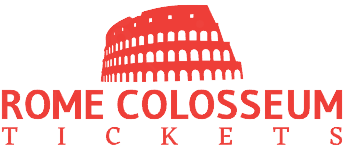Purpose of the Colosseum
The Colosseum, also known as the Flavian Amphitheatre, stands as a testament to the grandeur and significance of ancient Rome. This iconic structure, built during the Roman Empire, served a variety of purposes that reflected the social, political, and cultural values of the time. Let’s explore the main purposes of the Colosseum and its enduring legacy.
Spectacles and Entertainment: One of the primary functions of the Colosseum was to host spectacles and entertain the citizens of Rome. Gladiatorial contests, animal hunts, mock naval battles, and other public spectacles were organized within the amphitheater. These events were meant to provide amusement, excitement, and a sense of civic pride. The grand scale of the Colosseum allowed for large audiences to gather and witness these extraordinary displays.
Social Control and Political Propaganda: The Colosseum played a crucial role in maintaining social order and political control in ancient Rome. The spectacles served as a means for the Roman emperors to demonstrate their power and connect with the people. By staging grandiose events, the emperors aimed to keep the citizens entertained and distract them from political issues. It was a way to assert dominance and maintain public support.
Symbol of Roman Engineering and Architecture: The construction of the Colosseum showcased the engineering prowess and architectural innovation of the ancient Romans. The use of concrete, arches, and vaults allowed for the creation of a massive and structurally advanced amphitheater. The Colosseum served as a symbol of Roman engineering excellence and their ability to build grand structures that stood the test of time.
Public Gatherings and Social Hierarchy: The Colosseum served as a space where people from all walks of life could come together. The seating arrangements reflected the social hierarchy of Roman society. The elites and nobility occupied the lower levels, closer to the action, while the common citizens and lower classes were seated higher up. The Colosseum provided an arena for communal experiences, reinforcing social distinctions and reinforcing the power dynamics of the time.
Architectural Legacy and Cultural Heritage: The Colosseum has endured as a symbol of Rome’s rich history and cultural heritage. Its architectural design and significance have inspired countless structures around the world. The amphitheater represents the grandeur and achievements of the Roman Empire, leaving a lasting legacy that continues to captivate and awe visitors to this day.
Tourism and Economic Impact: In the modern era, the Colosseum plays a significant role in attracting tourists from all over the world. It has become a major cultural and historical landmark, contributing to Rome’s tourism industry and local economy. The Colosseum serves as a symbol of Italy’s rich heritage and draws millions of visitors who want to immerse themselves in the ancient history and experience the awe-inspiring architecture.
Education and Research: The Colosseum has also become a site for educational purposes and archaeological research. Scholars, historians, and archaeologists study the Colosseum to gain insights into ancient Roman society, architecture, and engineering techniques. Through excavation and analysis, ongoing research continues to uncover new knowledge about the Colosseum and its significance in Roman history.
In conclusion, the Colosseum served multiple purposes in ancient Rome, including entertainment, social control, political propaganda, architectural legacy, and cultural heritage. Its grandeur, engineering marvels, and historical significance continue to inspire and captivate visitors, making it a symbol of Rome’s glorious past and an enduring testament to the achievements of the Roman Empire.
